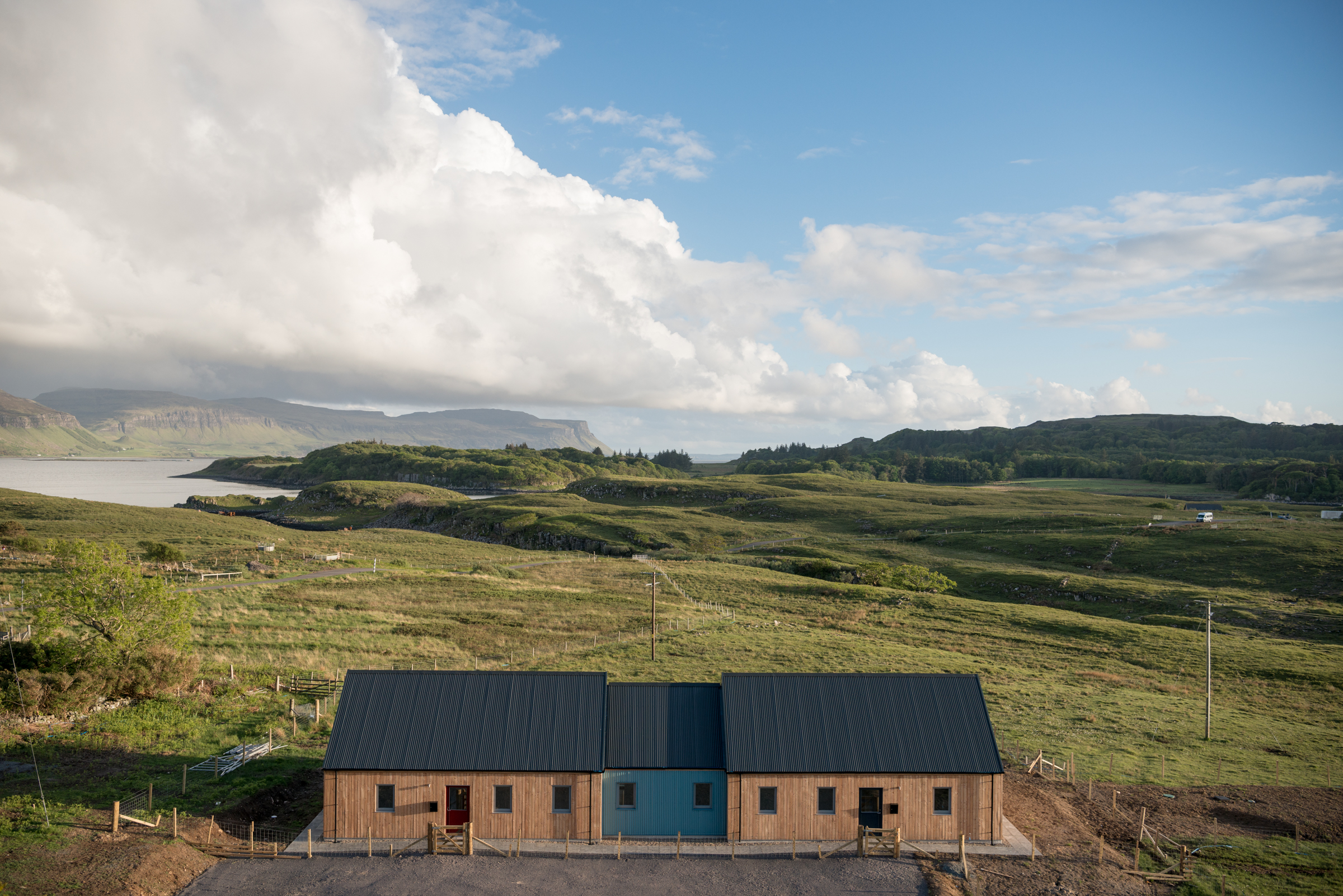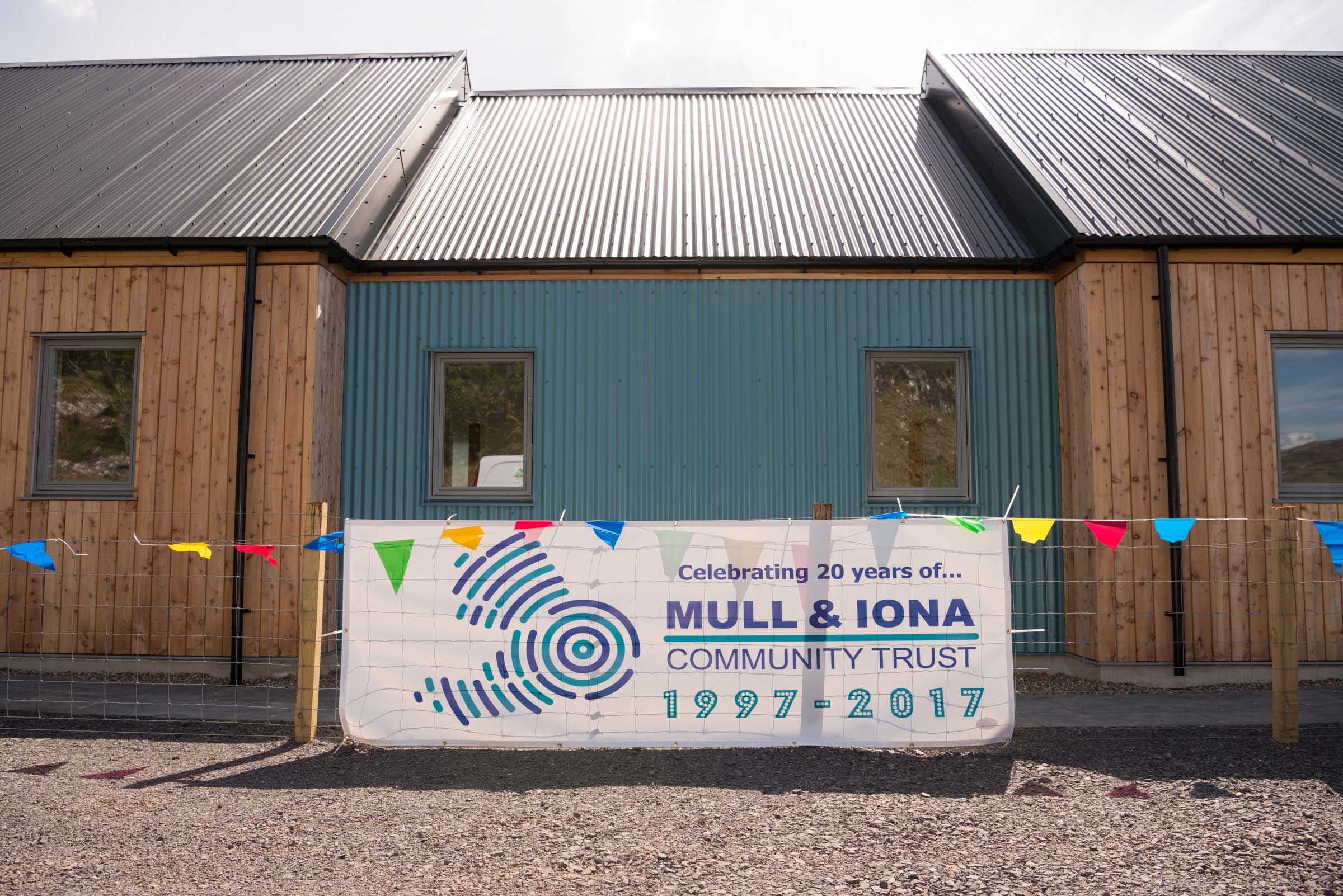Winner of the Scottish Rural Innovators award for Housing, 2016 and the SURF Sustainability award for Housing in 2017. Shortlisted for the Structural Timber Awards in the Social Housing Project of the year category 2018.
Ulva Ferry is a remote village in the National Scenic Area of North West Mull. Strong winds and heavy rains due to its exposed coastal location can make it a challenging but beautiful place to live.
In 2010 the community was under threat of losing its Primary School and Community Centre due to population decline caused by a lack of affordable housing options. This project, a joint venture between the Ulva School Community Association (USCA) and Mull and Iona Community Trust (MICT), sought to sustain the community by providing two, three-bedroom rental homes, giving priority to young families.
Our aim was to create modern, comfortable and bright affordable family housing, with low heating bills to combat fuel poverty and thermally robust construction to prevent dampness and mould in the high humidity location.
The houses are ‘Silver’ certified by the Association for Environment Conscious Building (AECB). They are happily occupied by two families with a total of 6 children and have affordable rents and low energy bills, which make them a significant community asset.
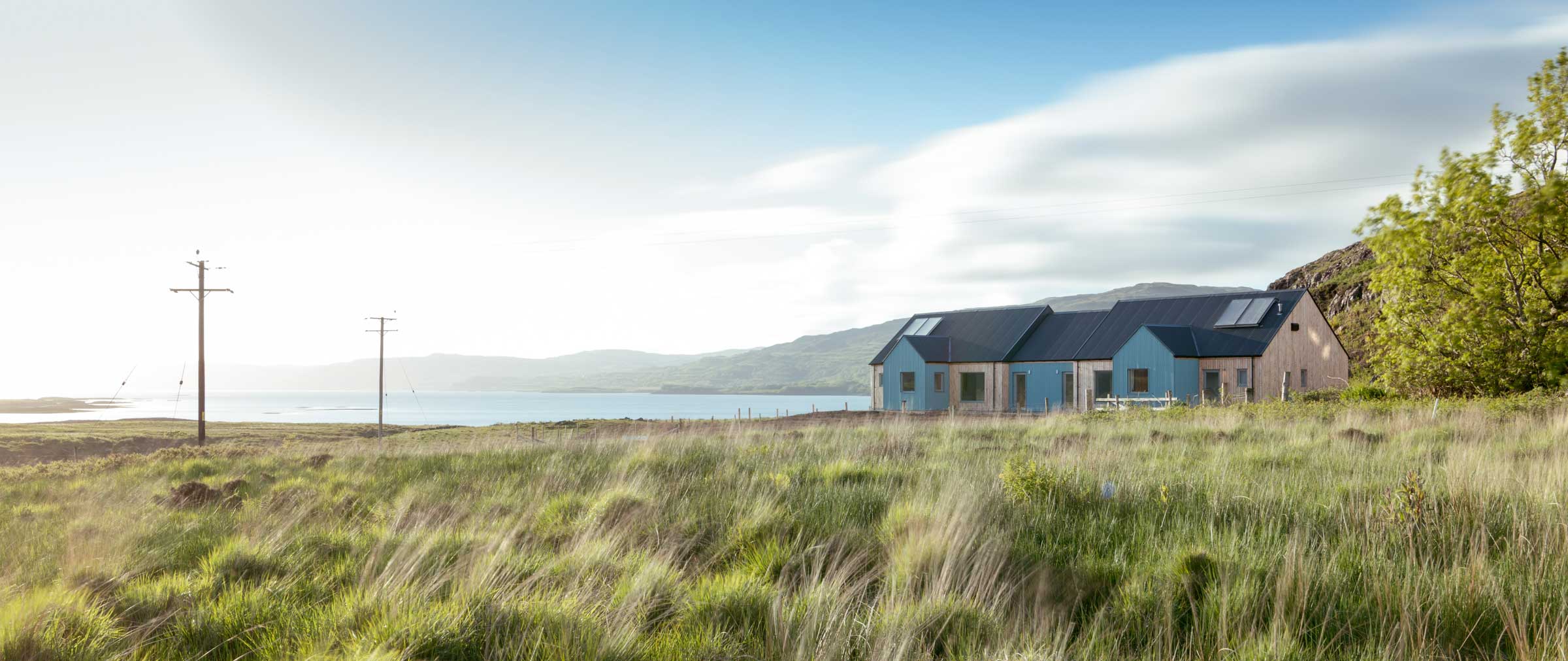
Design principals
The houses are designed using Fabric First, Passive House principles. A Cross laminated timber structure allowed us to create generous internal volumes inside a more reserved exterior. CLT helped us achieve great levels of airtightness and continuous insulation resulting in negative thermal bridging values. The thermally robust construction, along with modest north, east and west glazing and compact services mean that the houses are close to Passive standard, despite their single storey massing, rounding off the row of buildings, as encouraged by the local planners.
Internally, emphasis is placed on the kitchen, dining and living space as the heart of family life, and a strong connection is made between these spaces, the garden, and the wild landscape beyond. To create value, formal circulation and built-in storage was minimised thereby increasing the floor area and flexibility of spaces. A separate utility room gives access to the garden and an abundance of warm, ventilated storage is provided in the roof space.
The homes have more traditional, private north facing elevations, as seen from the road, and large areas of triple glazing to the garden and the south. The external cladding is sourced from a traditional, vernacular palette of Scottish larch and corrugated metal in a blue that takes precedent from the colours of the sea. We developed a set of custom details that sought to elevate the modest materials and create crisp and clean profiles that will prolong their life and protect them from harsh weather conditions.
The houses are heated by a single storage heater in the main living space, along with an electric towel rail in the bathroom. Hot water is mainly provided by solar thermal panels in the summer, with an electric back-up in the winter. A mechanical heat recovery system ensures that cooking smells from the open plan kitchen are minimised and humidity is controlled throughout the house. This system recovers heat from the extracted air to ensure nothing is wasted.
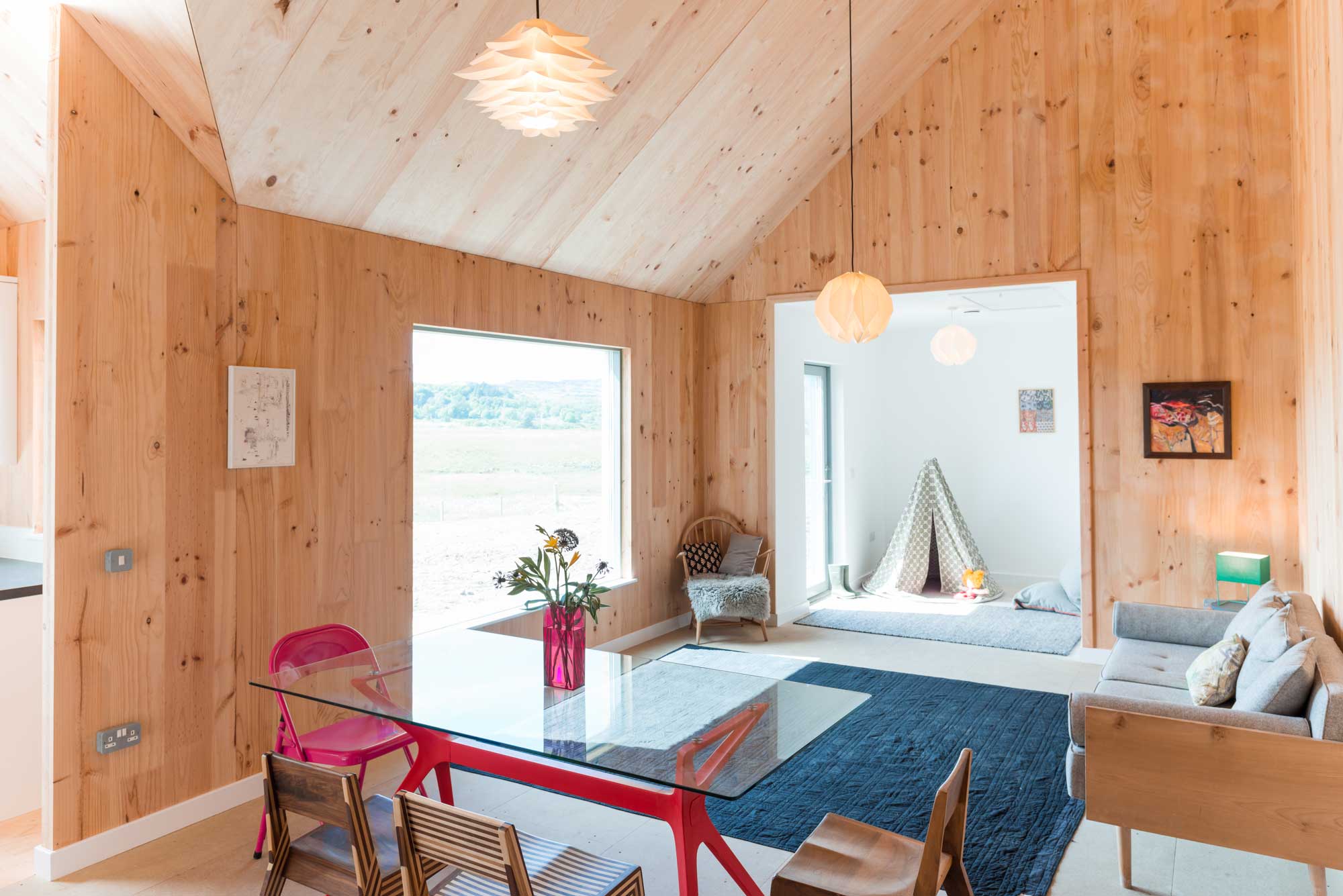
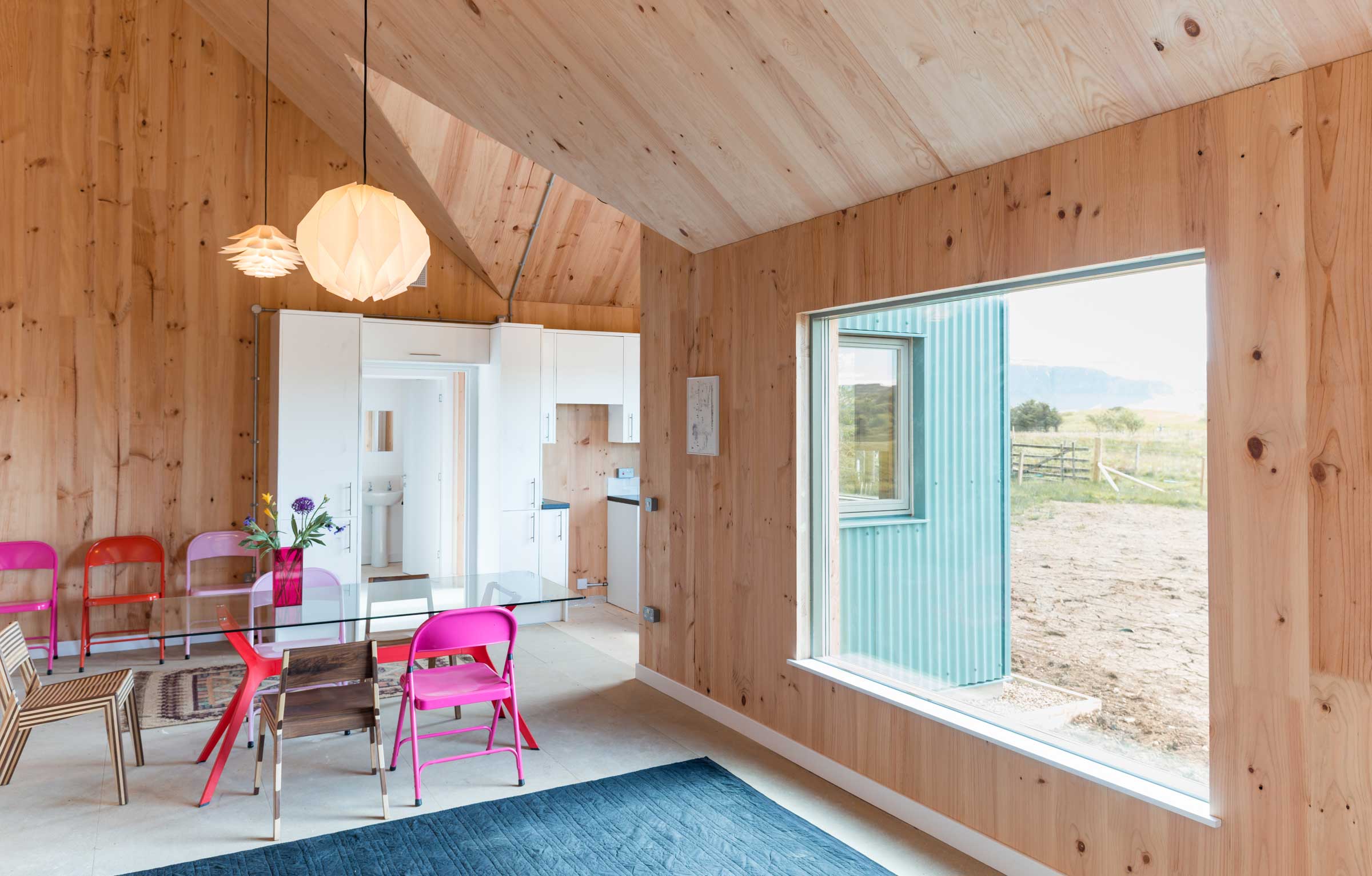
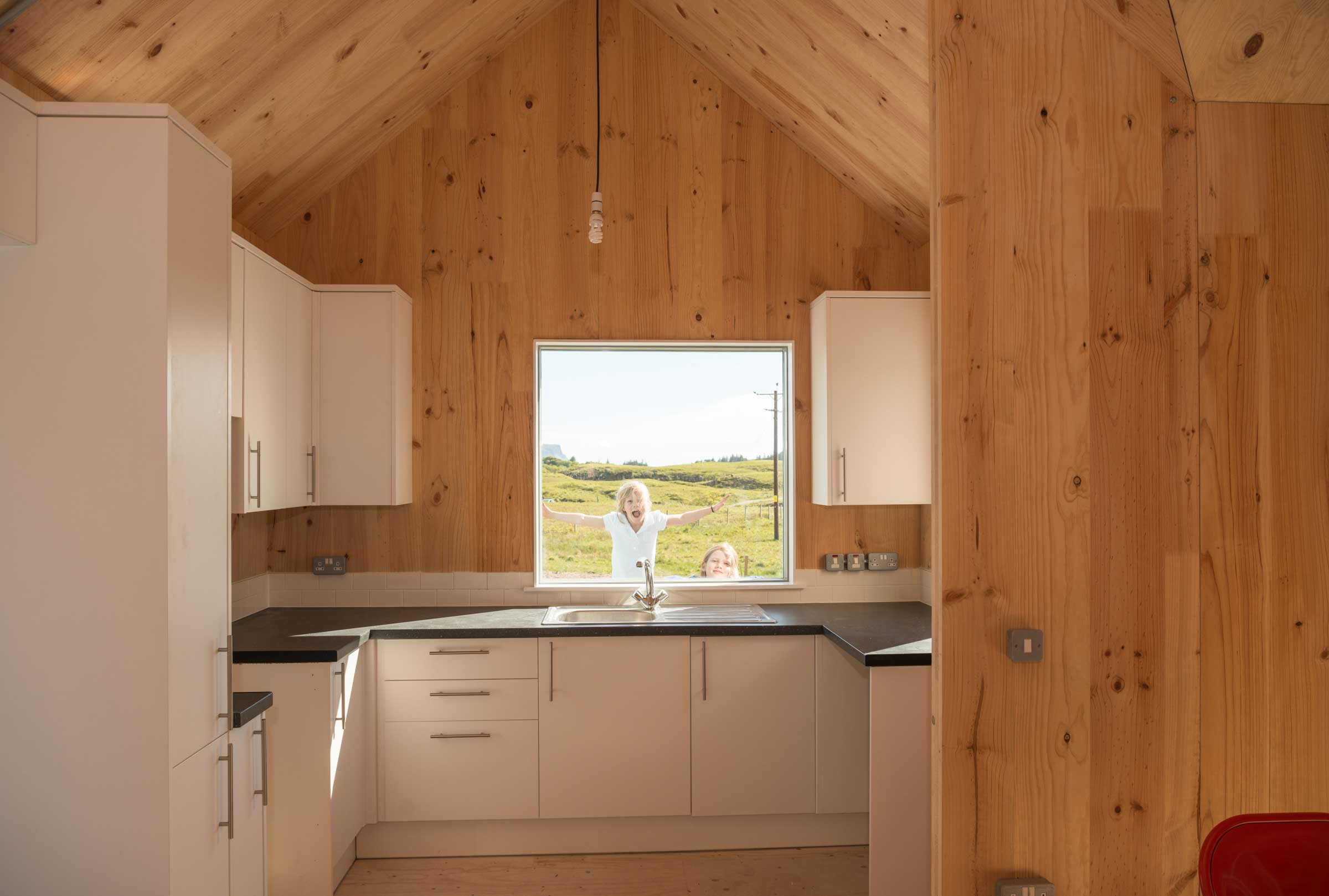
We wanted to deliver the best possible value to the community to make the most of their investment in the project and felt that adopting passive principles would secure tenancies in an area where heating costs associated with converted farm buildings and traditional properties can be difficult to sustain. Working with local contractors, unfamiliar with passive techniques and rigorous air testing and in a climate that can often be unsympathetic, we were looking for a way of simplifying the process.
We were familiar with Cross Laminated Timber through studying timber construction methods and felt that using CLT would allow us to achieve a very high standard of build quickly, easily and economically. Both houses achieved final airtightness results of 0.39l/s despite our contractors working under difficult conditions.
The houses are extremely thermally efficient as the structure is all on the same plane and the construction is thermal-bridge-free, with the exception of the small transfer points of the fixing through the insulation to the CLT.
The space heating requirement is minimal: a single storage heater in the main living space, along with an electric towel rail in the bathroom. Thanks to the high level of airtightness our use of a Mechanical ventilation and heat recovery system is particularly efficient, and the thermal mass provided by the CLT helps to keep internal temperatures constant.
The houses at Ulva Ferry are featured in Issue 23 of Passive House Plus Magazine.
